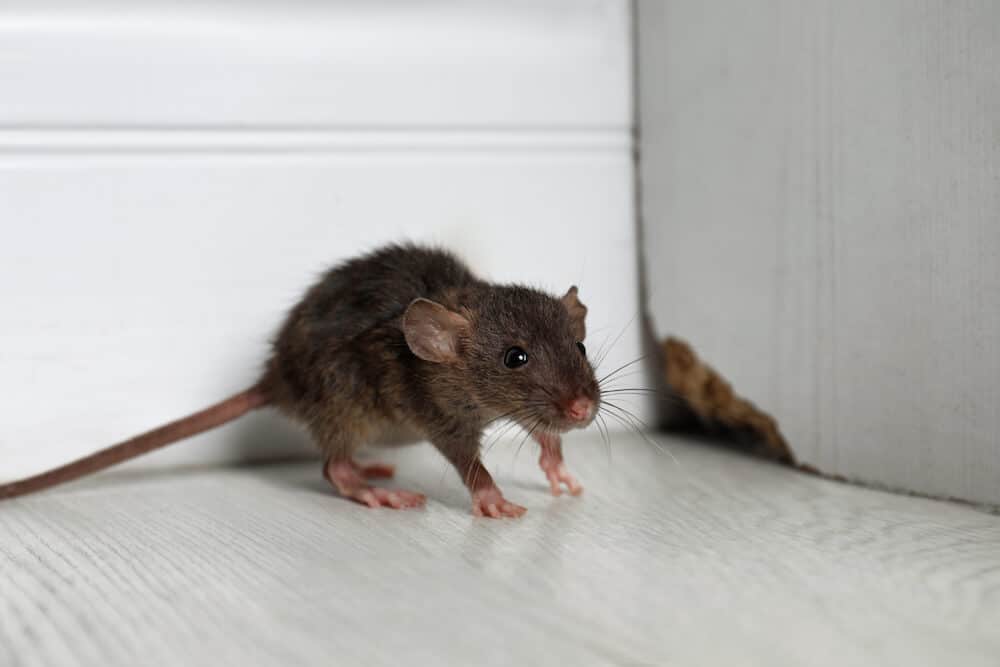Pests pose a problem no matter where you are. However, the specific type of pests you’ll be dealing with depends on where you live. In San Diego and up the coast, there are plenty of rodents and birds that can find their way into your attic.
Fortunately, by understanding the potential risks and impacts of pest infestations and following these key pest removal and prevention tips, you can effectively protect your San Diego attic and home.
Common Pests You’ll Find in San Diego Homes
San Diego is home to a wide variety of different pests. Rats are among the most common, and their increased size compared to mice means you’re more likely to notice them as well. You will find plenty of roof and wood rats in San Diego. Roof rats love to climb, so they’re more likely to be in your attic, while wood rats tend to stay outdoors.
You can also find a wide range of bird species taking up roosts in attics throughout San Diego. Common pigeons are widespread and can work their way into your attic, although they typically nest outdoors. House sparrows are named for their proclivity to nest indoors, and their smaller size lets them infiltrate through tiny holes.
How Pests Impact Your Home
These pests can pose a real problem to your home. While they rely on an existing gap of some kind to enter, they often widen and expand that gap over time. This can allow for larger pests to enter, along with exposing your home’s structure to the elements. You can find yourself with water damage to your roof over time.
Rodents and birds also often use insulation as a nesting material. They will rip up and move insulation, which lowers its effectiveness as holes allow for easier heat transfer. They can also soil the insulation with droppings, reducing its effectiveness and creating unsanitary conditions.
The Risks of Rodent Infestation
Rodents have long been known to pose serious health hazards when they infiltrate living spaces. The rats and mice found in San Diego can carry a variety of diseases and parasites into your home. Even if you don’t have direct contact with the pests, they can leave droppings throughout your home and even get into your food.
Rat-bite fever is a bacterial disease spread by rodent bites and scratches. It can cause serious fever and rashes.
Rats also carry a variety of parasites, such as tapeworms. Contact with rats or their droppings can spread these parasites.
Bird-Related Health Hazards
Birds can be just as serious of health hazards if they get into your home. There are a variety of diseases spread through bird droppings, as well as bacteria such as E. coli and salmonella. They also pose a risk of histoplasmosis, which is spread through a fungus.
Various strains of bird flu can also be a concern. While current bird flu risk in the U.S. is low, new strains emerge from time to time that can be harmful. Maintaining consistent contact with wild birds increases your chance of exposure.
Pests Love a Messy Attic
The specific types of pests you should be most worried about in San Diego are rodents and birds that prefer messy attics to clean ones. These small animals need somewhere to hide and take shelter from the elements. They also need nesting materials, such as old clothing or insulation.
However, these animals also try to avoid predators and humans. This means they want somewhere narrow and isolated. If you have an attic full of junk that you rarely visit, chances are pests may have taken the opportunity to find an ideal nesting ground.
Professional Attic Cleaning
If you’ve moved into a new home and found that attic to be a mess or have found yourself in a similar situation over the years, you might consider professional attic cleaning. There’s a good chance pests have already taken hold, and they pose a biological safety risk. The same is also true for any mold or mildew present.
Professional attic cleaners can clear out the attic safely. They can also carry out the thorough inspection necessary to identify any pest problems or other issues that can affect the safety and integrity of your attic.
Humane Pest Removal
If signs of pest activity are present, you should consider going with humane pest removal. Options such as spring or glue traps are often ineffective in dealing with infestations and can inflict unnecessary pain on rodents. Poisons can be similarly inhumane and also pose a health risk to your family and pets.
Humane removal involves trapping or capturing rodents or birds and releasing them in a wilderness environment. This method protects you and your family by avoiding any hazardous chemicals while also being the best option for pest animals who are simply trying to find effective shelter.
After Your Attic Pest Removal
After humane pest removal, you’ll need to pest-proof your attic to avoid other animals moving in. The holes or gaps that the original infiltrators got in through are still there, and other pests will quickly move into the unoccupied space.
Professionals have the skills and tools to find these holes and gaps, no matter how small. They can then safely seal them to prevent further infestation. This also helps stop drafts that could be affecting your home’s cooling and heating bills.
Keeping Your Attic in Top Condition
How can you take care of your attic after dealing with pests and having the proper rodent-proofing? If you use your attic for storage, make sure that everything is put away in pest-proof containers rather than cardboard boxes. Avoid clutter that leaves ideal nesting areas.
Ideally, your attic will be insulated and sealed to provide optimal energy efficiency, prevent moisture issues, and keep pests out. Options such as a radiant barrier serve to reduce utility costs, increase the lifespan of your roof, and keep unwanted pests out for good.
Get Your Free Attic Inspection in San Diego
Not sure if your attic could be at risk of pest infestation? At Attic Projects, we can get rid of any rodents plaguing your home and ensure they don’t come back — with a 100% fair price guarantee.
Our team can inspect your attic in San Diego for free to identify issues such as old or damaged insulation, holes and gaps, or drafts and moisture that could signify a risk of pest infiltration. Reach out today to get started.




